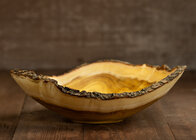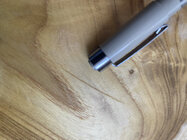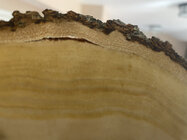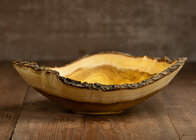I green turned this mulberry bowl 5 days ago and have been drying it in paper bags since then. While drying a crack has started and the bark is starting to lift in one spot. It's turned fairly thick so it still has a fair amount of drying left. Wondering what advice you all may have to mitigate the damage.
It's from a friends birth tree, a tree her father who recently passed planted when she was born. It came down a few months ago and I was able to grab just a few pieces (it was cut into firewood lengths and left to crack unfortunately). I know it would mean a lot to her so I am hoping to try and minimize the cracking and bark lift. I tend to just chalk up cracks and losses as part of my experience as a newish turner but hopefully I can save this one and give it to her......
Thanks in advance!
It's from a friends birth tree, a tree her father who recently passed planted when she was born. It came down a few months ago and I was able to grab just a few pieces (it was cut into firewood lengths and left to crack unfortunately). I know it would mean a lot to her so I am hoping to try and minimize the cracking and bark lift. I tend to just chalk up cracks and losses as part of my experience as a newish turner but hopefully I can save this one and give it to her......
Thanks in advance!






